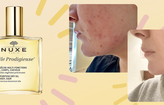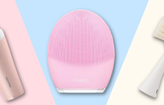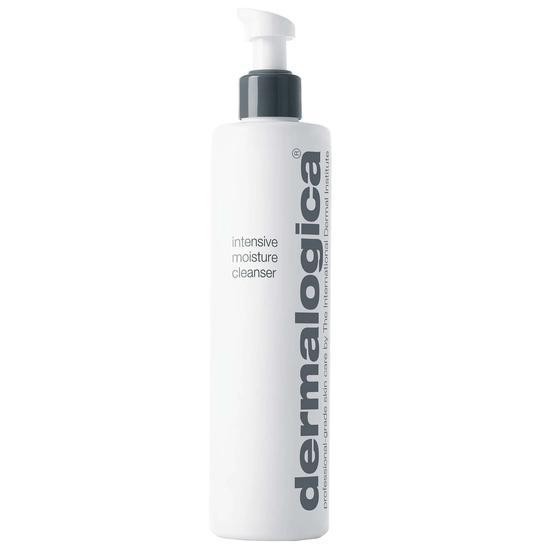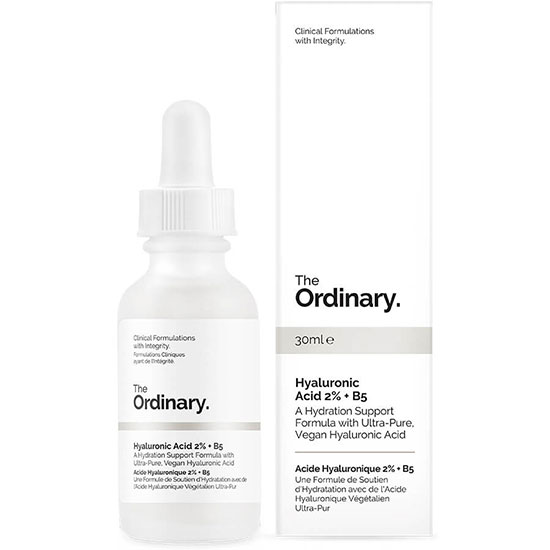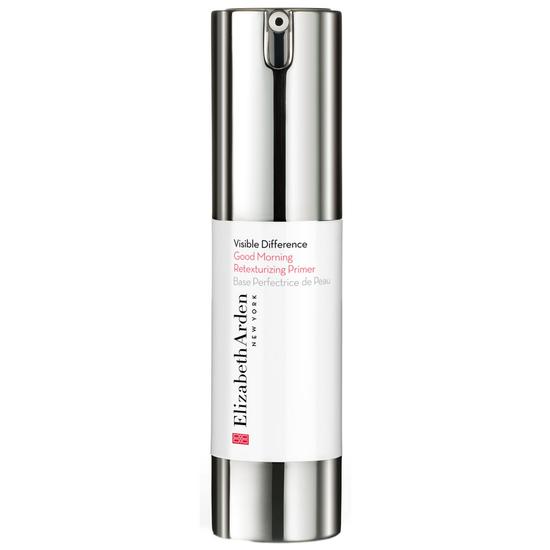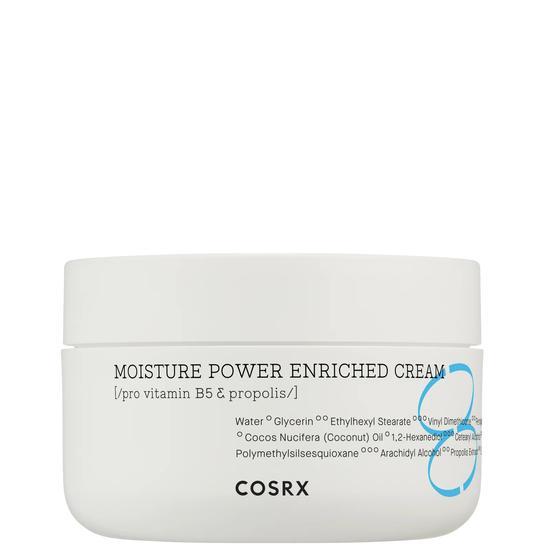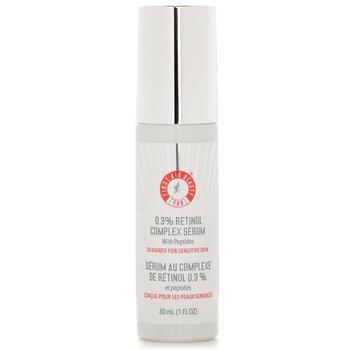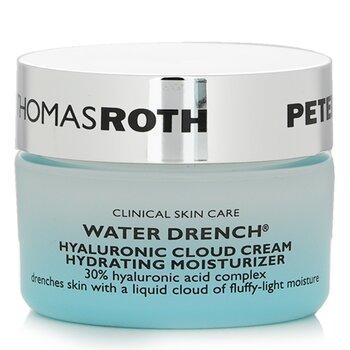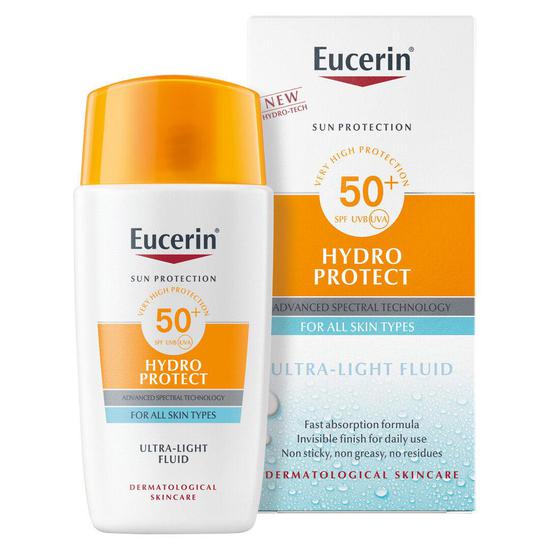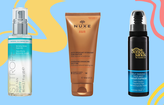
- Skin
- Retinol With Hyaluronic Acid
Can You Use Retinol With Hyaluronic Acid?
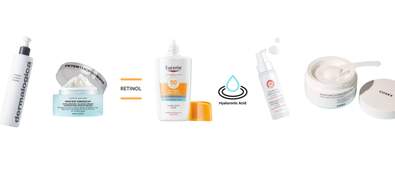
Both retinol and hyaluronic acid are skincare actives with renowned anti-ageing and barrier-supporting properties. They're both well-researched and dermatologist-endorsed. Beyond this, however, they each offer something altogether very different.
Think of the two as apples and oranges: both great for you, but generally used for very different purposes.
Can You Use Retinol With Hyaluronic Acid?
Absolutely.
And not only can you—this duo is actually one of the most dermatologist‑recommended combinations for smoother, healthier skin. Retinol, the vitamin A derivative celebrated for its cell renewal powers, can be intense, especially for beginners. That’s where hyaluronic acid (HA) comes in. This moisture‑magnet delivers deep hydration that helps buffer the drying effects of retinol, making it easier for your skin to adapt and thrive.
Together, they form a balanced routine that supports both renewal and resilience.
👉 Already know the benefits of each ingredient?
Jump To Routine
What Does Retinol Do For Skin?
Retinol is a powerful ingredient derived from vitamin A. It accelerates skin cell turnover, which means it helps old, dead skin shed more quickly to reveal newer, smoother layers beneath. Over time, this process fades pigmentation, softens fine lines, refines texture and helps to reduce breakouts.
By stimulating collagen production, retinol also improves elasticity and firmness—but it doesn’t come without downsides. Retinol is notorious for causing dryness, flaking, and irritation in the early stages of use. That’s why pairing it with something as hydrating as hyaluronic acid is such a smart strategy.
Key benefits of retinol include:
- Boosts cell turnover: Encourages faster skin regeneration for smoother, fresher skin
- Minimises fine lines and wrinkles: Helps reduce visible signs of ageing by increasing collagen
- Improves tone and texture: Fades dark spots and improves uneven or rough areas
- Clears congested skin: Unclogs pores and regulates oil to reduce acne
- Firms skin over time: Strengthens underlying structure for a more youthful appearance
(Source: Cosmopolitan, Cleveland Clinic)
Best for:
- Ageing or sun-damaged skin
- Oily, acne-prone or textured complexions
- Normal to dry skin when paired with hydration
Not ideal for highly sensitive skin unless used carefully and slowly
What Does Hyaluronic Acid Do For Skin?
Hyaluronic acid (HA) is a naturally occurring sugar molecule in the skin that holds up to 1,000 times its weight in water. In skincare, it functions like a sponge—drawing in and retaining moisture to keep skin plump, smooth and comfortable.
As we age, our natural hyaluronic acid levels decline. This loss leads to dryness, fine lines and a less firm appearance. Applying HA topically helps restore hydration levels and improve elasticity.
Key benefits of hyaluronic acid include:
- Deep hydration: Attracts water to the skin for lasting moisture and bounce
- Plumper, smoother skin: Fills out fine lines and softens surface texture
- Barrier support: Reinforces the skin’s natural defences against irritation
- Reduces redness and irritation: Calms skin, especially when dealing with strong actives like retinol
- Improves skin resilience: Hydration boosts the skin’s ability to repair itself
(Source: Cosmopolitan, Cleveland Clinic)
Best for:
- Dehydrated or dry skin
- Oily or acne-prone skin (it’s non-comedogenic)
- Sensitive skin needing gentle hydration
All skin types looking for a moisture boost
Why Do Retinol And Hyaluronic Acid Work Well Together?
Retinol is effective—but also demanding. It transforms the skin over time, but its intensity can compromise your barrier if not used carefully. That’s where hyaluronic acid proves essential.
Using HA before or after retinol (depending on the formulation) adds moisture back into the skin, reducing the risk of flaking, stinging, or general discomfort. The combination creates a “buffering” effect, easing retinol’s entry into your routine while enhancing its benefits.
This pairing doesn’t just work—it excels:
- Retinol refines and resurfaces
- HA comforts and protects
Together, they support a long-term routine that smooths, plumps and corrects without excessive dryness.
Comparing Retinol And Hyaluronic Acid Side-By-Side
| Benefit | Retinol | Hyaluronic Acid |
|---|---|---|
| Cell turnover & renewal | ✅ Fast and effective | ❌ Not a resurfacing agent |
| Fades fine lines | ✅ Stimulates collagen | ✅ Plumps via hydration |
| Treats hyperpigmentation | ✅ Strong, long-term effects | ❌ Minimal direct effect |
| Clears acne & congestion | ✅ Unclogs pores | ❌ No direct action |
| Boosts hydration | ❌ May dry skin | ✅ Extremely hydrating |
| Soothes irritation | ❌ May trigger irritation | ✅ Soothing and calming |
| Strengthens skin barrier | ⚠️ May initially weaken | ✅ Helps rebuild barrier |
| Suitable for sensitive skin | ⚠️ With careful introduction | ✅ Yes, very gentle |
Hyaluronic Acid Also Pairs Well With:
- Vitamin C – For antioxidant protection and glow
- Niacinamide – For calming inflammation and improving tone
- Peptides – For firming and restoring elasticity
- Ceramides – To deeply reinforce the skin barrier
Retinol also works well with:
- Niacinamide – Soothes and reduces irritation risk
- Hyaluronic acid – Balances and hydrates
- Peptides – Improves firmness and elasticity
- Azelaic acid (if used alternately) – Calms redness and boosts clarity
How To Apply Retinol And Hyaluronic Acid Together
Option 1: Layer them
- Cleanse skin thoroughly
- Apply hyaluronic acid serum to damp skin (optional step for sensitive users)
- Apply retinol and allow to absorb (5–10 mins)
Follow with moisturiser or additional hyaluronic acid layer for added hydration
Option 2: Sandwich technique
Apply moisturiser first, then retinol, then another layer of hyaluronic acid or a moisturiser. This “buffering” helps reduce irritation in sensitive or dry skin.
Bonus tip: Use retinol at night only, and always follow with SPF during the day. Hyaluronic acid can be used both AM and PM.
FAQs
Can you layer hyaluronic acid and retinol in the same routine?
Yes, it’s encouraged. Hyaluronic acid will help reduce dryness and make your skin more receptive to retinol.
Should I apply HA before or after retinol?
You can do either, depending on the texture. If HA is in a lighter serum, apply it first. If it’s in a richer product, apply after retinol to seal in hydration.
Can I use this combo if I’m new to retinol?
Yes—especially then. Start with a low concentration of retinol and use HA before and after to ease your skin into the adjustment phase.
Will this help with retinol peeling?
Hyaluronic acid helps calm and hydrate the skin, significantly reducing the likelihood of flaking.

Written by Maria Mukaranda
Maria’s background is rooted primarily in creative media and a love for all things written, expressed through experience both online and in print; for creative platforms spanning from music to fashion to beauty.
Top Posts

